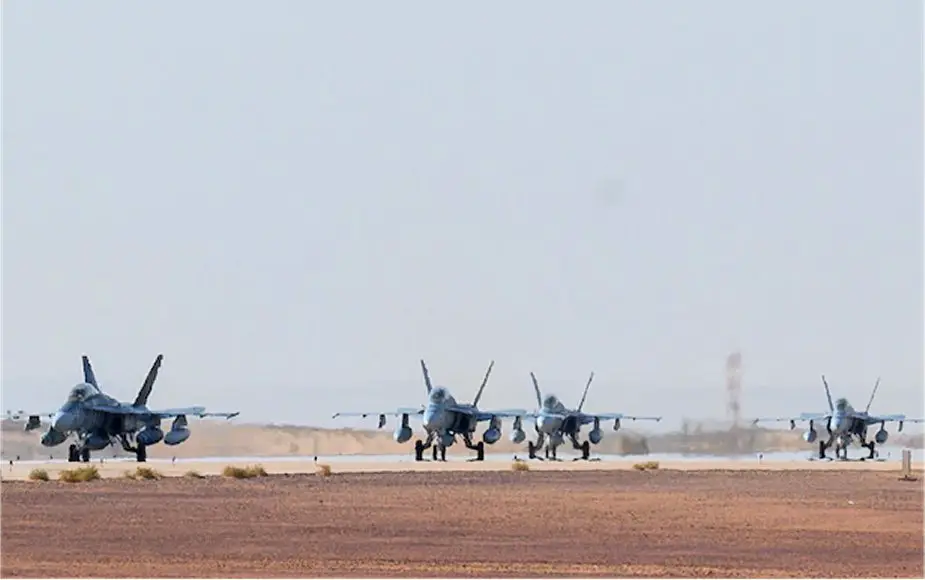Breaking news
US deploys F/A-18D aircraft in Saudi Arabia.
According to information published by U.S. Department of Defense on May 18, 2021, U.S. Marine Corps F/A-18D Hornet aircraft from Marine All Weather Fighter Squadron 224, Marine Aircraft Group 31, deployed to Prince Sultan Air Base, Kingdom of Saudi Arabia, this week as part of a dynamic force employment to enhance U.S. Central Command’s ability to deter aggression and promote security and stability within the USCENTCOM area of responsibility.
Follow Air Recognition on Google News at this link
 U.S. Marine Corps F/A-18D Hornets taxi across the flightline at Prince Sultan Air Base, Kingdom of Saudi Arabia, May 8, 2021. (Picture source: U.S. Air Force)
U.S. Marine Corps F/A-18D Hornets taxi across the flightline at Prince Sultan Air Base, Kingdom of Saudi Arabia, May 8, 2021. (Picture source: U.S. Air Force)
The detachment of F/A-18s along with squadron personnel, from Marine Corps Air Station, Beaufort, South Carolina, will rapidly integrate into the U.S. Air Forces Central’s theater air operations, including participating in coalition and regional partner-nation integration events. The unit’s presence in the theater highlights the U.S. military’s ability to deploy and employ forces anywhere around the globe at any moment.
CENTCOM’s last dynamic force deployment, a detachment of U.S. Air Force F-15E Strike Eagles from Seymour Johnson Air Force Base, S.C., occurred in January 2021.
The McDonnell Douglas F/A-18 Hornet is a twin-engine, supersonic, all-weather, carrier-capable, multirole combat jet, designed as both a fighter and attack aircraft (hence the F/A designation).
Designed by McDonnell Douglas (now part of Boeing) and Northrop (now part of Northrop Grumman), the F/A-18 was derived from the latter's YF-17 in the 1970s for use by the United States Navy and Marine Corps.
The Hornet is also used by the air forces of several other nations, and formerly, by the U.S. Navy's Flight Demonstration Squadron, the Blue Angels.
The F/A-18 was designed to be a highly versatile aircraft due to its avionics, cockpit displays, and excellent aerodynamic characteristics, with the ability to carry a wide variety of weapons.
The aircraft can perform fighter escort, fleet air defense, suppression of enemy air defenses, air interdiction, close air support, and aerial reconnaissance. Its versatility and reliability have proven it to be a valuable carrier asset, though it has been criticized for its lack of range and payload compared to its earlier contemporaries, such as the Grumman F-14 Tomcat in the fighter and strike fighter role, and the Grumman A-6 Intruder and LTV A-7 Corsair II in the attack role.

























